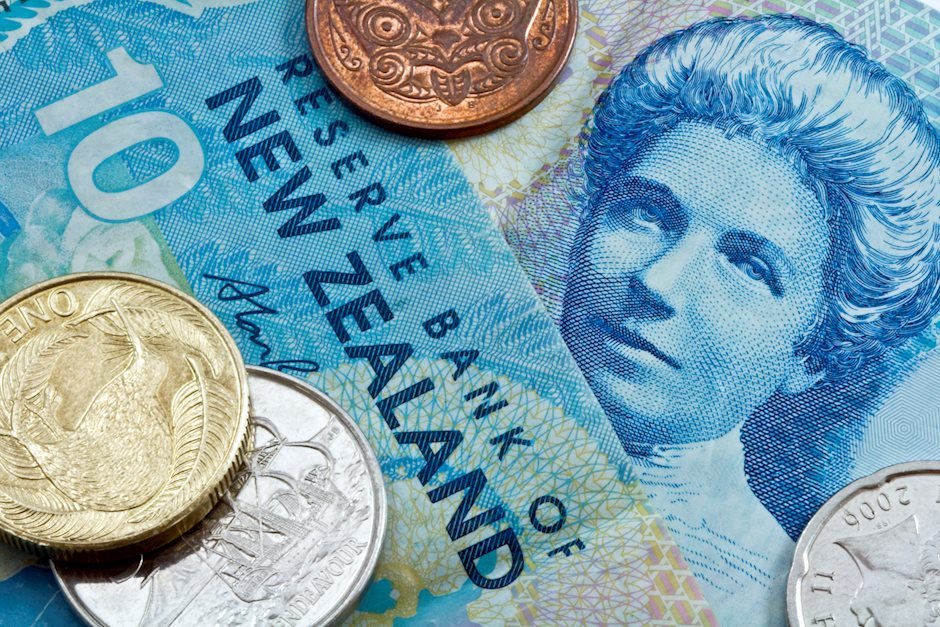NZD/USD remains above 0.6100 due to rising expectations of Fed rate cuts
- NZD/USD gains ground as US Dollar improves on rising odds of Fed rate cuts in 2024.
- The US ISM Services PMI dropped to 48.8 in June, marking its steepest decline since April 2020.
- Fed’s Austan Goolsbee stated that bringing inflation back to 2% will require more time and data.

NZD/USD extends its winning streak for the third successive session, trading around 0.6120 during the European hours on Thursday. This upside is attributed to a decline in the US Dollar (USD), which could be attributed to softer data from the United States (US) raising speculations of the Federal Reserve (Fed) reducing interest rates in 2024.
US ISM Services PMI fell sharply to 48.8 in June, marking the steepest decline since April 2020. This figure was well below market expectations of 52.5, following a reading of 53.8 in May. The ADP Employment report showed that US private businesses added 150,000 workers to their payrolls in June, the lowest increase in five months. This figure fell short of the expected 160,000 and was below the downwardly revised 157,000 in May.
Federal Reserve Bank of Chicago President Austan Goolsbee stated on BBC Radio on Wednesday that bringing inflation back to 2% will take time and that more economic data are needed. On the contrary, Fed Chair Jerome Powell said on Tuesday that the central bank is getting back on the disinflationary path, per Reuters.
In New Zealand, The Reserve Bank of New Zealand (RBNZ) is set to deliver an interest rate decision next week after maintaining borrowing costs at 5.5% for the seventh consecutive meeting in May. Traders will take more cues from the Monetary Policy Statement post-rate decision.
The New Zealand Dollar (NZD) might face a challenge as the Caixin Services Purchasing Managers' Index (PMI) in China, a major trading partner, fell to 51.2 in June from 54.0 in May on Wednesday. The market had forecast a figure of 53.4 for the period.
New Zealand Dollar FAQs
The New Zealand Dollar (NZD), also known as the Kiwi, is a well-known traded currency among investors. Its value is broadly determined by the health of the New Zealand economy and the country’s central bank policy. Still, there are some unique particularities that also can make NZD move. The performance of the Chinese economy tends to move the Kiwi because China is New Zealand’s biggest trading partner. Bad news for the Chinese economy likely means less New Zealand exports to the country, hitting the economy and thus its currency. Another factor moving NZD is dairy prices as the dairy industry is New Zealand’s main export. High dairy prices boost export income, contributing positively to the economy and thus to the NZD.
The Reserve Bank of New Zealand (RBNZ) aims to achieve and maintain an inflation rate between 1% and 3% over the medium term, with a focus to keep it near the 2% mid-point. To this end, the bank sets an appropriate level of interest rates. When inflation is too high, the RBNZ will increase interest rates to cool the economy, but the move will also make bond yields higher, increasing investors’ appeal to invest in the country and thus boosting NZD. On the contrary, lower interest rates tend to weaken NZD. The so-called rate differential, or how rates in New Zealand are or are expected to be compared to the ones set by the US Federal Reserve, can also play a key role in moving the NZD/USD pair.
Macroeconomic data releases in New Zealand are key to assess the state of the economy and can impact the New Zealand Dollar’s (NZD) valuation. A strong economy, based on high economic growth, low unemployment and high confidence is good for NZD. High economic growth attracts foreign investment and may encourage the Reserve Bank of New Zealand to increase interest rates, if this economic strength comes together with elevated inflation. Conversely, if economic data is weak, NZD is likely to depreciate.
The New Zealand Dollar (NZD) tends to strengthen during risk-on periods, or when investors perceive that broader market risks are low and are optimistic about growth. This tends to lead to a more favorable outlook for commodities and so-called ‘commodity currencies’ such as the Kiwi. Conversely, NZD tends to weaken at times of market turbulence or economic uncertainty as investors tend to sell higher-risk assets and flee to the more-stable safe havens.
Author

Akhtar Faruqui
FXStreet
Akhtar Faruqui is a Forex Analyst based in New Delhi, India. With a keen eye for market trends and a passion for dissecting complex financial dynamics, he is dedicated to delivering accurate and insightful Forex news and analysis.

















